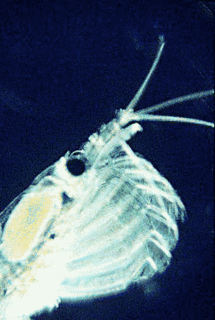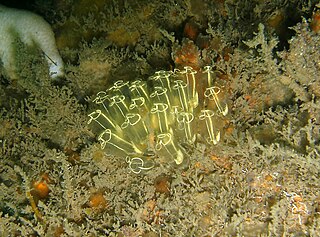
Clavelina lepadiformis, common name the light-bulb sea squirt, is a colonial sea squirt native to the NE Atlantic Ocean.

Nembrotha purpureolineata is a species of colourful sea slug, a dorid nudibranch, a marine gastropod mollusc in the family Polyceridae. Nembrotha rutilans, classified as a separate species until 2008, has now been reclassified as Nembrotha purpureolineata.
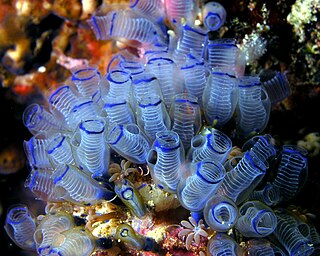
Clavelina moluccensis, common name bluebell tunicate, blue bell tunicate, or Blue Sea Squirt is a species of tunicate, in the genus Clavelina. Like all ascidians, these sessile animals are filter feeders.

Clavelina picta, common name the painted tunicate, is a species of tunicate, in the genus Clavelina. These animals, like all ascidians, are sessile filter feeders.
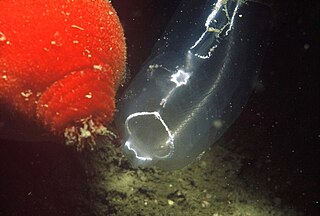
Clavelina sabbadini is a species of tunicate, in the genus Clavelina. Like all ascidians, these sessile animals are filter feeders.

Pycnoclavella diminuta, known as the white-spotted sea squirt, white-spot ascidian, and white-spotted ascidian, is a species of tunicate, in the genus Pycnoclavella. Like all ascidians, these sessile animals are filter feeders.
Ecteinascidia turbinata, the mangrove tunicate, is a sea squirt species in the genus Ecteinascidia, which was described to science in 1880 by William Abbott Herdman. The cancer drug trabectedin is isolated from E. turbinata.

Atriolum robustum is a colonial tunicate or sea squirt in the family Didemnidae. It is native to the western and central Indo-Pacific where it is usually found anchored to a hard surface in shallow water.
Maritigrella crozierae, the tiger flatworm, is a species of marine polyclad flatworm in the family Euryleptidae. It is found on the eastern coasts of North America and the Caribbean Sea where it feeds on colonial sea squirts.

Polycarpa aurata, also known as the ox heart ascidian, the gold-mouth sea squirt or the ink-spot sea squirt, is a species of tunicate in the family Styelidae.

Didemnum molle is a species of colonial tunicate in the family Didemnidae. It is commonly known as the tall urn ascidian, the green barrel sea squirt or the green reef sea-squirt. It is native to the Red Sea and the tropical waters of the Indo-Pacific region.

Didemnum vexillum, the carpet sea squirt, is a species of colonial tunicate in the family Didemnidae. Thought to be native to Japan, it has been reported as an invasive species in a number of places in Europe, North America and New Zealand. It is sometimes given the nickname "D. vex" because of the vexing way in which it dominates marine ecosystems when introduced into new locations, however the species epithet vexillum actually derives from the Latin word for flag, and the species was so named because of the way colonies' long tendrils appear to wave in the water like a flag.
Perophora japonica is a species of colonial sea squirt in the genus Perophora, native to the North Indo-Pacific. It has spread to several other parts of the world including the south coast of Britain, France, the Netherlands and the west coast of the United States.
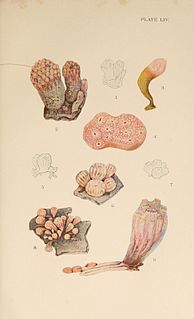
Morchellium argus, the red-flake ascidian, is a species of colonial sea squirt, a tunicate in the family Polyclinidae. It is native to shallow water in the northeastern Atlantic Ocean, especially round the coasts of Britain.
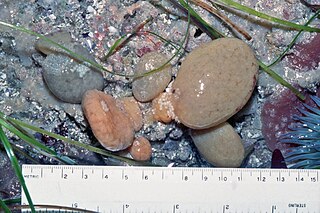
Polyclinum planum, is a compound ascidian commonly known as the Elephant Ear Tunicate. It is an ascidian tunicate in the family Polyclinidae. Ascidians are also known as sea squirts.
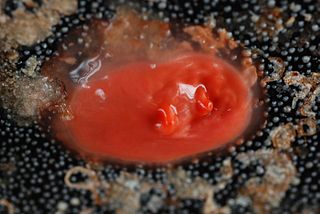
Cnemidocarpa finmarkiensis is a species of solitary ascidian tunicate in the family Styelidae. Common names include broad base sea squirt, orange sea squirt, red sea squirt, shiny orange sea squirt, shiny red tunicate and Finmark's tunicate. It is native to shallow waters in the northern and northeastern Pacific Ocean.
Pyura haustor is a species of sessile ascidian, or sea squirt, that lives in coastal waters in the northeastern Pacific Ocean, attached to rocks or artificial structures. Common names for this species include the wrinkled seapump, the wrinkled sea squirt and the warty tunicate.



